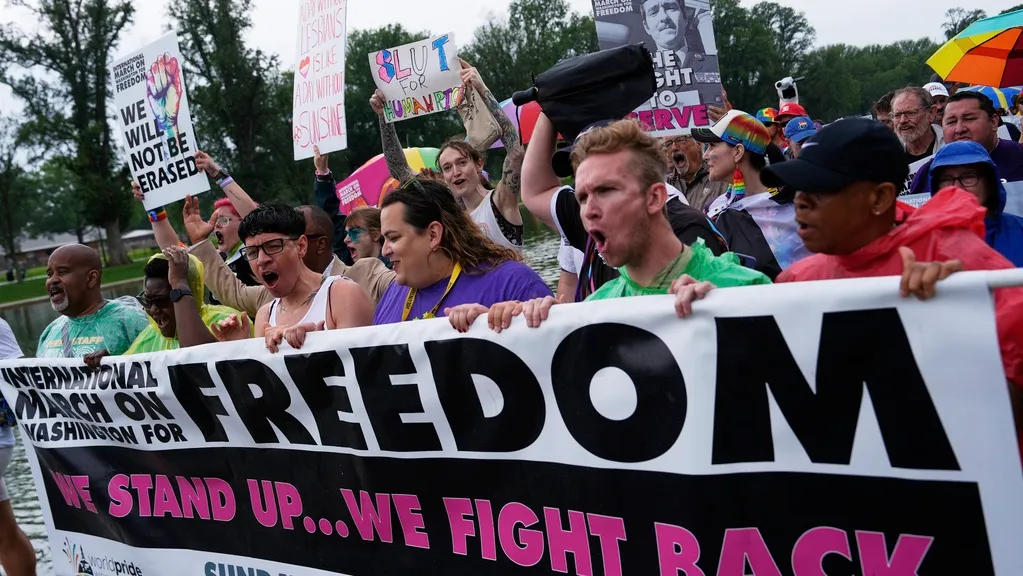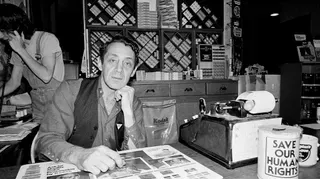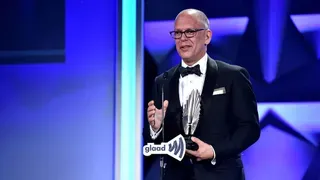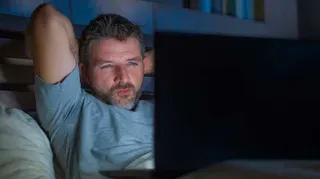January 16, 2014
New Year, New Resolve
Kilian Melloy READ TIME: 4 MIN.
It's a new year and during January, many smokers will try kicking the habit that, according to the American Lung Association, causes more than 443,000, or one in five, American deaths each year and is the leading cause of preventable death in the U.S.
Smoking prevalence within the LGBT community is especially high. Unique stressors faced by LGBT people (social stigma, discrimination) combined with the tobacco industry's focused targeting, results in LGBTs being roughly two times more likely to take up smoking as straight Americans, according to www.smokefree.gov.
The California LGBT Tobacco Education Partnership says that women in the LGBT community smoke at a rate three times higher than the general population. Men belonging to the GBT community smoke twice as much. A 2010 national study by the National Center for Transgender Equality and the National Gay and Lesbian Task Force reported a 30 percent smoking rate -- almost one in three -- among transgender people. While little data exists for LGBT people of color, anecdotal evidence suggests the rates are even higher among those populations.
California LGBT Tobacco Education Partnership Project director Bob Gordon told the Bay Area Reporter that the tobacco industry has been tailoring advertising to the LGBT community since 1992 when the first smoking ad targeting gay men ran in the now-defunct Genre magazine.
"The tobacco industry spends $8.8 billion per year in the United States on marketing," Gordon said. "A lot of responsibility falls on them for targeting specific communities, the LGBT community and communities of color specifically."
For the past 20 years, Gordon, who is gay, has been dedicated to tobacco education initiatives. In 2008, through his work with the Education Partnership, he played a pivotal role in passing local policy that prohibited the sale of tobacco products in San Francisco's pharmacies.
"There's a Walgreens on the corner of 18th and Castro," Gordon said. "At the time, the manager told me it collected the highest tobacco-related revenue out of all 18,000 Walgreens locations nationwide. The idea that it's a place of medicine and also a place where my brothers and sisters were getting tobacco, well, that's a major disconnect."
Gordon is also involved with the Last Drag, a San Francisco resource center that provides free smoking cessation classes to LGBT and HIV-positive smokers. He said that two challenges stand between a smoker and clean lungs -- having the desire to quit, and believing that you can.
"That's a tall order for lots of people because there's no silver bullet. The CDC estimates that seven out of 10 smokers want to quit, and half of all smokers try each year," he said, referring to the Centers for Disease Control and Prevention.
Taking That First Step
However daunting, quitting is possible and there are many ways to do it. According to Smokefree.gov, combining counseling (in-person or telephone) with medication or nicotine replacement therapies (the patch, gum, lozenges, or inhaler) can be very successful.
"A good thing people can do is call 1-800-nobutts, the California smokers helpline," Gordon said. "You can call seven days a week and get free material mailed, ask for work groups and classes in your county, and have up to five free telephone sessions with a trained counselor. I've trained counselors there to be LGBT-sensitive. There are also several language lines for people who want to quit in another [language]."
Gaining some popularity in the Bay Area, though, is hypnotherapy. While sources like smokefree.gov state "there is little proof that this treatment helps smokers quit successfully," Gordon said he has friends who swear by it. He also pointed out that hypnosis is known as alternative medicine, and Western medicine and pharmaceutical company bias could exist around it.
Stephanie Ciccone-Nascimento, an Oakland-based hypnotherapist, agrees. Ciccone-Nascimento, an Afro-Brazilian queer woman, has been doing smoking cessation hypnotherapy for the past year. When people ask her about hypnotherapy, she explains it like this:
"Hypnosis is a state we naturally go in and out of in our day-to-day lives, like when you're driving and you zone out or when you're watching TV," she said. "It's a state where your unconscious mind, the place where your habits and memories are stored, can be accessed. When we enter hypnosis, we can give direct suggestions that can change the automatic programming we have set. Shifting that programming while in that state is what creates lasting change."
But, she added, "I can't make someone do something they don't want to do. The unconscious mind preserves your core and if you're not ready, you'll reject the therapy. That's why it's really important that you really want to quit."
First, Ciccone-Nascimento conducts pre-framing with her clients, the process of developing trustworthy rapports, clarifying misconceptions about hypnotherapy, and collecting information about what her client envisions their non-smoker reality to look like. Then, Ciccone-Nascimento does a trance induction, which begins the hypnosis.
"Once in that state, I give direct suggestions about being a non-smoker," she said. "I also retell the 'non-smoker' narrative I collected from them. After that, I take them out of the trance and we do 'future-pacing,' which is talking about how they feel when thinking of themselves in the future. It's nothing dangerous, but incredibly effective for changing habits and quitting smoking, specifically."
Katie Pratt, a lesbian who teaches in Oakland, started smoking in 2009. She never smoked a pack a day but between one and five cigarettes was enough for her. Within four years as a smoker, she tried to quit five times. Cold turkey, increasing cardio exercise, journaling, avoiding bars and social settings, and chewing gum never helped.
"All my efforts to completely quit smoking were in vain -- until I met Stephanie," Pratt, 27, said. "I was skeptical at first because I didn't know much about hypnotherapy but was open to the experience and really wanted to quit. I'd tried other methods and Stephanie's nature was really calming, so I did it. Now, my cravings are completely gone even when I'm in triggering situations, it's crazy."
Pratt has been smoke-free since last August. Her girlfriend loves it. Ciccone-Nascimento describes what she does as life-saving work, and Gordon supports anything that works for anybody.
"Celebrating each new year with family members is priceless," Gordon said. "Preventing loss of life and promoting healthier living is also priceless."
For more information about the Last Drag, visit www.lastdrag.org. For more information about Stephanie Ciccone-Nascimento, visit www.stephaniecn.com
Kilian Melloy serves as EDGE Media Network's Associate Arts Editor and Staff Contributor. His professional memberships include the National Lesbian & Gay Journalists Association, the Boston Online Film Critics Association, The Gay and Lesbian Entertainment Critics Association, and the Boston Theater Critics Association's Elliot Norton Awards Committee.






